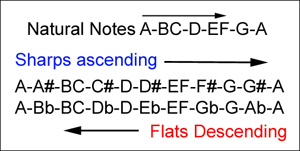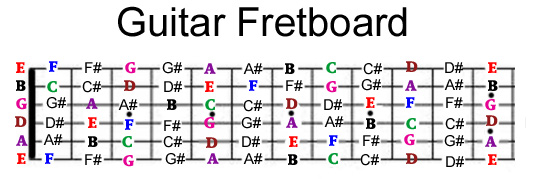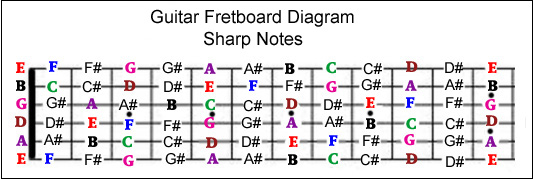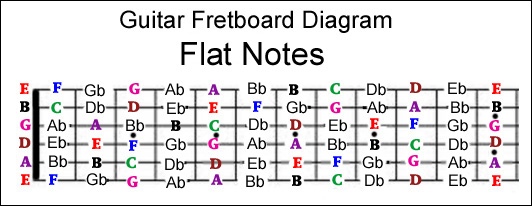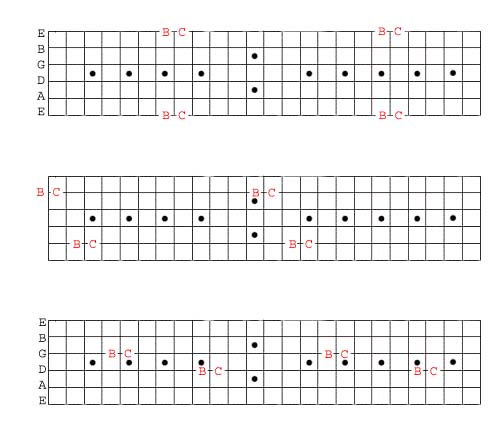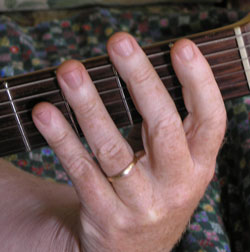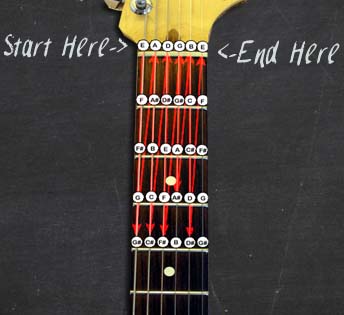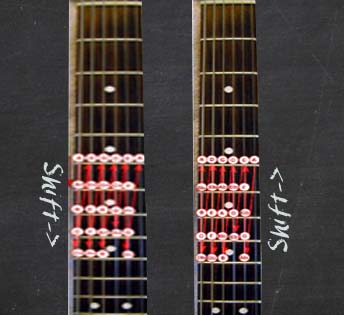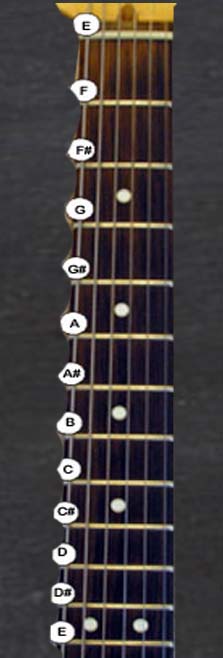|
Learn
the Fret Board |
I'm sure you probably know some of the reasons why knowing the notes on fretboard is important to your skill set as a guitarist. But just in case you think it might be a option, let me assure you it can be one of the most helpful things you can do for your progress as a guitarist. This is a typical fretboard - Dots on the guitar neck give reference points to guide you and help you know where you are on the fretboard layout. Accurate guitar soloing is dependent on knowing where you are on the fretboard. It is worth your time to learn the notes on guitar fretboardSure there are ways to make it sound like you knew what you were doing but if you are totally wrong about where you are on the fretboard it will sound terrible. Chord construction - all chords are movable around the fretboard, if you know your chord shapes then you can just move to where the right root note is for that particular chord. Scales are the basic building blocks of music and just like chords they are movable up and down the guitar fretboard. Find the root note on the neck of your guitar and you are ready for that lick or riff that you practiced, just in another key. If you have trained your ears properly, which is a whole new subject, you will be able to move straight to the correct position to crank into the lead you know you are ready for. Just being able to go straight to the notes on the fretboard you are hearing while playing with a band is one of the important reasons that memorizing the fretboard is. important. Being ready in just that sort of situation can mean the difference between getting a gig in a band or being passed up. The musical alphabet on guitar is made up from the first seven letters of the alphabet and then repeats. A, B, C, D, E, F, G and then A again. In between some of the notes are ‘Sharps’ ( # ) and ‘flats’ ( b )So if you see a C# it is known as a “C Sharp”Example: Db is a “D flat” - C# is a "C sharp". All the notes have sharps and flats except for BC and EF Here is the complete musical alphabet:A, A#/Bb, B, C, C#/Db, D, D#/Eb, E, F, F#/Gb, G, G#/Ab, A If you are going up the scale you have sharps and if you are going down you have flats. They are really the same note but change names with the direction.
Guitar Fretboard Layout The following fretboard charts show the layout of the notes on the guitar fretboard. These are fretboard maps to help you understand the layout of the notes on the guitar neck and help you memorize the fretboard. Don't stop with these! - I have a complete program for memorizing the notes on a guitar fretboard easily and quickly right below these diagrams.
Easy system for Memorizing Fretboard Notes For the most part, if your a little like me at all, having a guitar book or teacher tell you that you have to memorize the fretboard is intimidating to say the least. First here are some tips for learning the notes on the fretboard 1.Remember knowledge & effort = results. While this system is fast compared to other methods it does take some time. Put in 15 minutes a day till you have it down cold. 2. Use a tuner to check your progress - this will tell you how well you are doing. Immediate feedback will build confidence. 3. keep a journal of your progress. 4. take one step at a time and reward your self for progress. Lets give it a go.. I've based my memory technique for the notes on guitar fretboard on a concept call chunking. Large groups of letters or numbers are easier to memorize by putting together small groups from the large. 245687 or 24 56 87, the second set of numbers, though the same, should be easier to remember. Let me explain...For an example in a major scale - C D EF G A BC Fretboard notes BC and EF are only one fret or semitone away from each other while the others are two frets or a whole tone apart. So by learning the location of BC and EF first, the rest of the notes are easier to visualize and memorize. Take one chart at a time, use as much time as it takes to completely internalize the note locations and it should be much easier. Because of the heavy graphics I will present my system in several parts Guitar fretboard diagram memorization system part one..... Instructions for part one: Use the following diagrams to practice locating notes BC two strings at a time until you can go right to them. Fretboard memorization system - step 1
This is the the Musical Alphabet: In Western music, there are 12 different notes that can be played. They are: A | A# | B | C | C# | D | D# | E | F | F# | G | G# When you get to G# you go back to A only this starts the next octave. and this just continues until it gets so high that your brain explodes and then, well it just doesn't really matter after that does it? Why the guitar is normally tuned EADGBE The way that the guitar neck is set up is that all the notes are under or within one fret of being under the four fingers of the hand. Take a look at the following graphics. In the first four frets and in the open strings are two octaves of all the notes of the musical alphabet. Go ahead and follow the arrows on your guitar and you'll see what I'm talking about.
So thats the first four frets of the guitar fretboard notes. What about the rest? Same day, different frets. Only this time you'll have to make a shift to reach all the notes. One fret up and then slide down for the other notes. Guitar fretboard notes in two octaves starting from the fifth fret. This pattern of notes would be the same no matter where you start on the neck. Pretty simple eh? This makes a great warm up exercise and really helps make those finger shifts automatic.
click picture to enlarge o how about going all the way down the string? Here's how you do it. it'd the same for each string. Just start at the note for the open string.
Remember sharp notes going up, flat notes going down. |
© 2014 Progressive Edge Records


